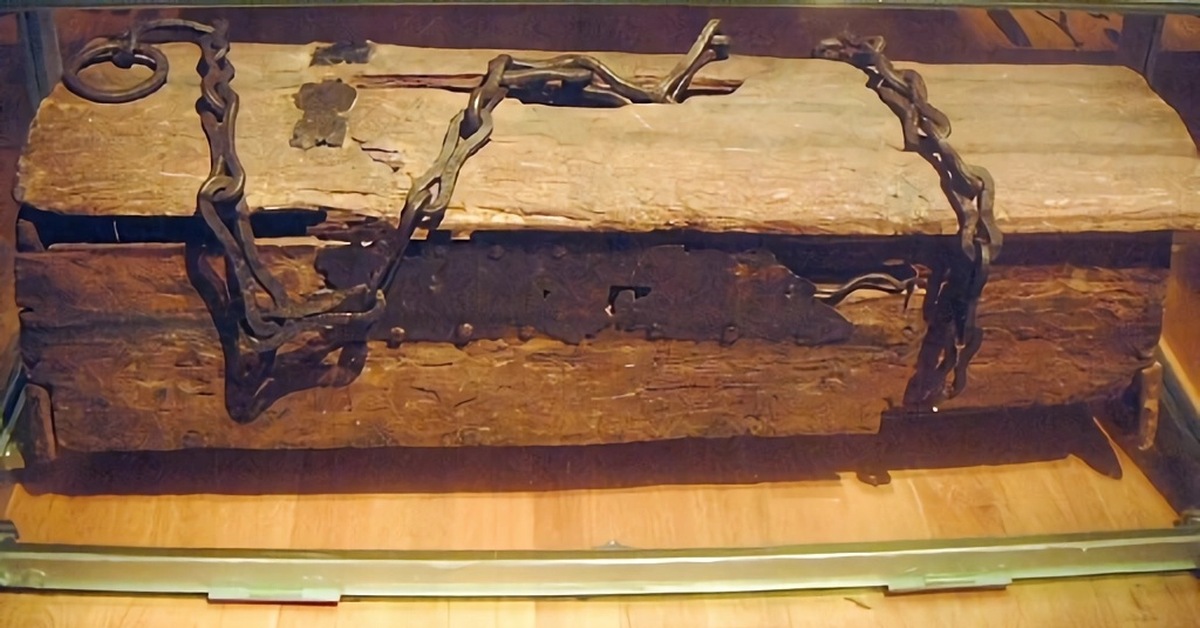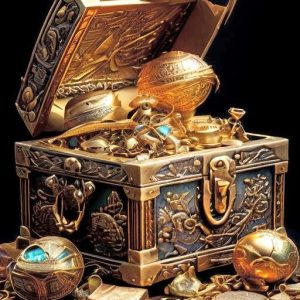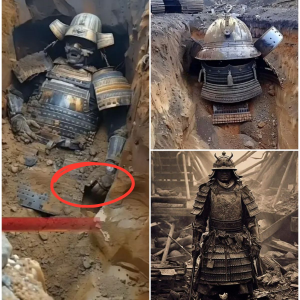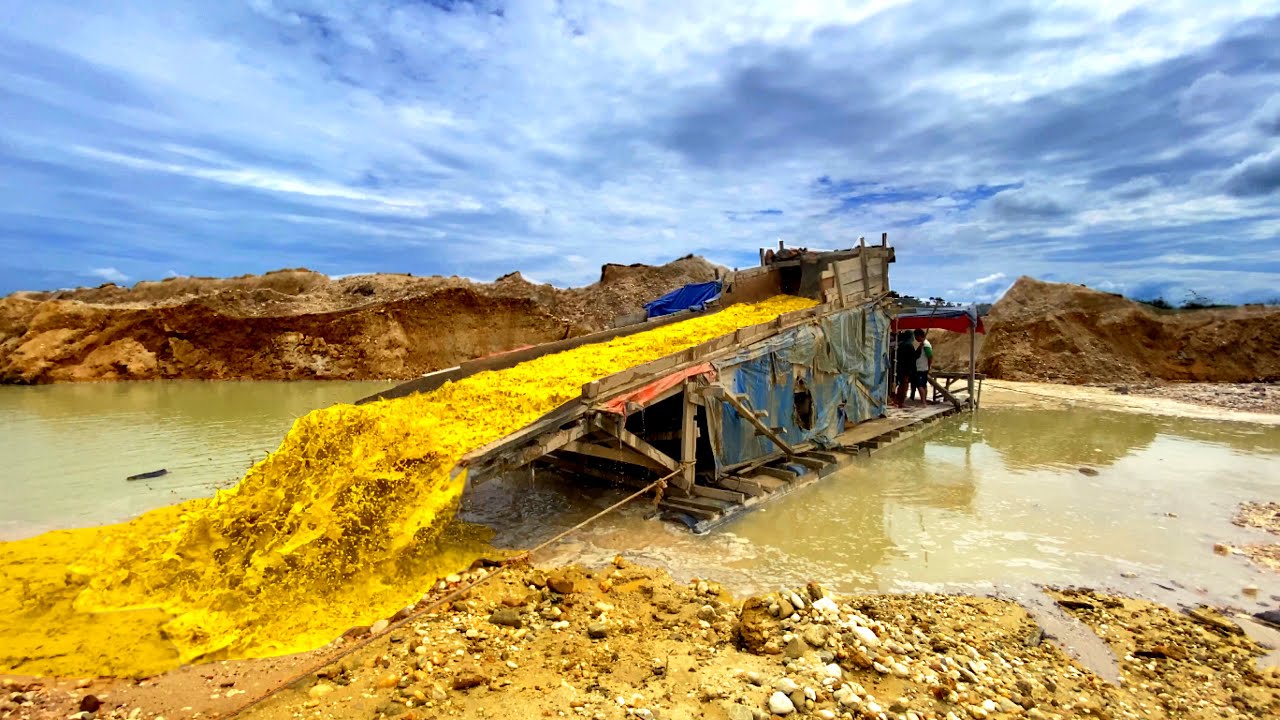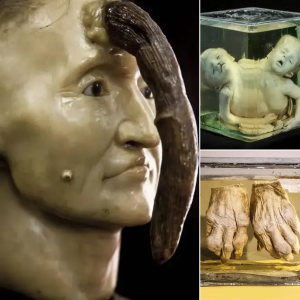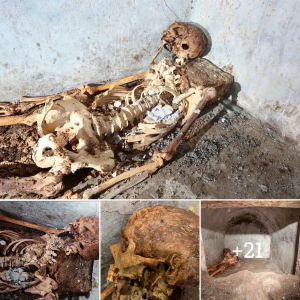
About 135 years ago, in a Chinatown in San Jose, California, the leftover bones from a luxurious fish landed in a communal trash pit. Perhaps a farmworker treated himself to the delicacy sold in a shop with specialty imports. Or a merchant may have savored the dried fish, after catching an opera in the local theater. What we know for sure: The bones remained in that trash pit, some months or years later, when an 1887 arson fire destroyed the immigrant enclave known as Market Street Chinatown.
More than a century after the fire, archaeologist Ryan Kennedy spotted the bones as he examined nearly 6,000 fish remains salvaged from the razed Chinatown. Distinct from the collection’s plentiful perch and other North American seafood, the specimens that caught Kennedy’s eye—pinky-sized discs with protruding spines—resembled the vertebrae of Asian fish.
DNA analysis narrowed the suspects to one species: The bitty backbones belonged to giant snakeheads, carnivorous fish that prowl the freshwaters of Southeast Asia. Fishers and traders likely dried, then ferried this catch from its native waters to Hong Kong, across the Pacific to the major port of San Francisco, and finally another 50 miles southeast to San Jose’s Market Street Chinatown. Kennedy and colleagues’ genetic detective work, published last month in American Antiquity, delivers the first material proof that prized food traveled all the way from Southeast Asia to the U.S. in the late 1800s. The fish’s multi-nation journey reveals the strength and complexity of trade ties, which connected the Chinese diaspora.
During the latter half of the 19th century, over 2.5 million individuals moved from China to other Pacific nations like the Philippines, Australia, Peru and Canada. Motivated, in part, by economic struggles at home and opportunities abroad, close to 370,000 of the immigrants sailed to the mainland U.S. These mostly young men labored for railroads, farms and mines, while others ran businesses like laundries, groceries, and fishing operations. To send wages to their families in China, the workers relied on jinshanzhuang or “Gold Mountain Firms”—Hong Kong-based importer and exporters that moved items, individuals and money throughout Chinese settlements around the world.
According to Kennedy, archaeologists who study this time period, tend to only consider trade between China and the U.S., and specifically the Hong Kong-San Francisco route. “We’ve ignored [the] transnational aspect… how fish moved around Asia before they got to North America,” he says. That’s why the Southeast Asian fish, he identified, marks a significant find.
“This was a surprise… to find the evidence of these trade networks beyond what we had normally assumed was just Hong Kong to the western U.S.,” says Virginia Popper, an archaeologist at the University of Massachusetts Boston, who was not involved with the study.
According to historian Connie Young Yu, the well-traveled fish bones offer evidence of “the sophistication and the industry of the Chinese in food production.” Yu was not directly involved in the study, but she helped the scientists make sense of their findings.
And for Yu, the results are personal: Her grandfather lived in Market Street Chinatown when he emigrated from China at age 11. “It’s very, very exciting to have the study of a fish that was consumed by people like my grandfather… to learn about the cultural habits and the culinary habits,” she says.
Now the heart of Silicon Valley, San Jose developed as an agricultural hub in the late 19th century. It was the distribution center for fruit, nuts and vegetables grown in the surrounding farmlands. Census counts from 1880 indicate the city held over 12,000 inhabitants, including about 1,000 Chinese immigrants, who lived in Market Street Chinatown. Crammed within two city blocks, the vibrant community featured a theater, tenement housing, restaurants and shops full of Chinese imports. In addition to the permanent residents, the enclave also served as home base for a few thousand more Chinese farmworkers, railroad builders and other transient laborers. During their stays in the neighborhood between jobs or over holidays, laborers might send letters home, visit a barber or brothel, or gamble in a game of pai gow dominoes.
A center for Chinese American culture, “It was everything you’d want,” says Kennedy. But “there’s the specter of anti-Chinese racism at all times, too.”
In 1882, President Chester A. Arthur signed the Chinese Exclusion Act, which banned immigration of Chinese laborers for ten years and barred those already settled from becoming citizens. The federal law “made it patriotic for Americans to exclude Chinese from labor, to exclude Chinese from all walks of American society,” says Yu.
Emboldened by the Exclusion Act, the San Jose City Council enacted discriminatory policies, like condemning Chinese laundries under the pretenses that their wooden structures were unsafe. In 1887, the San Jose mayor declared Market Street Chinatown a public nuisance, “dangerous to the health and producing discomfort to the people generally living in and frequenting the vicinity of said Chinatown,” reported a story in the Herald newspaper. One month later, an arson fire engulfed the community, according to historic news reports, summarized in Yu’s 2001 book Chinatown, San Jose, U.S.A. Among the evidence for arson: The water tank, which the resident fire brigade would have used to extinguish the flames, had been secretly drained. The next day, the Mercury newspaper described the scene as “a burning heap of ruins.” A headline in the Herald read, “No More Chinatown.”
“It was definitely anti-Chinese arson,” says Yu. “California and other states wanted to keep white supremacy.” Just last year, San Jose City Council formally apologized for the arson and pledged to redress lingering consequences of racist policies.

The residents quickly built new Chinatowns elsewhere in San Jose, but the original spot was built over and ignored by most for nearly a century—until developers broke ground there in 1985 for a hotel and financial center. Archaeologists monitoring the project realized the site held tangible value for the city’s Chinese American history. About 8 percent of San Jose’s one million residents identify as Chinese-American, and thanks to petitions from community activists, hasty but professional excavations occurred before the new buildings rose. Mostly, the team dug up privies and trash pits, chock full of discarded ceramics, tools, leather and table scraps.
“That’s how we have the artifacts, the remnants, the whole burned Chinatown,” Yu explains.
In the early 2000s, the community organizations History San José and Chinese Historical and Cultural Project teamed up with archaeologists to form the Market Street Archaeological Project, aimed at cataloging and analyzing the artifacts. Since then, the researchers have discovered intimate items within the collection, such as ebony dominoes, a calligraphy brush, and chopsticks made from bamboo and redwood. Food remains indicate the Chinatown residents enjoyed pork, beef, seafood and over 60 types of edible or medicinal plants. Some species, like bitter melon, must have come from Asia as seeds or preserves.
“They had a lot of their traditional foods,” says Popper, who studied the plant remains. “It was a very healthy diet.”
The finds help reanimate the lives of a community that was either omitted or stereotyped in most written records from the time. “Archaeology is a really powerful way to explore the gap between what people actually do and how they are portrayed historically,” writes Stanford University archaeologist Barbara Voss, who has led research on the Market Street Chinatown remains for 20 years, in an email. “We have uncovered a rich tapestry of detail about how San Jose’s Chinese American residents worked, played, raised children, went to school, built friendships, took care of their health and navigated the challenges of racism.”
About a decade ago, Kennedy joined the team and was tasked with studying more than 50,000 animal bones, which included 5,759 fish bits. Scrutinizing bone size, shape and other physical features, Kennedy was able to figure out the fish type for more than 3,000 specimens. While most came from California species, like perch and rockfish, about 15 percent of the identified bones belonged to fish found in the South China Sea—indicating Chinese fishers dried their catch and sent it, via traders, to America.
Thirty-six vertebrae, from at least three individual fish, stood out. Kennedy was confident they were snakeheads and figured they probably came from a variety native to southern China, the homeland for most Market Street Chinatown residents. However, different snakehead species live across Asia and have practically identical-looking vertebrae. By appearance alone, Kennedy couldn’t determine their particular species or geographic origin.
But DNA could. Kennedy, who is based at the University of New Orleans, sent eight of the specimens for genetic analysis at the University of Oklahoma, which was conducted by molecular anthropologist Brian Kemp and then-undergraduates Brittany Bingham and Mary Faith Flores. From all eight bones, the researchers successfully extracted a small stretch of DNA that differs between many fish, including ten species of snakehead. The results confirmed Kennedy’s initial conclusion, with a twist: The specimens were indeed snakeheads, but they belonged to a species known as giant snakehead, only found in the freshwaters of Southeast Asia in countries like Vietnam and Malaysia.
The steely black and iridescent fish can grow over four feet long and weigh almost 50 pounds. In muddy or swampy areas, giant snakeheads can crawl onto land, breathing through a primitive lung. Kemp was awed by the creatures: “They are monsters. They’re top predators. … They’re beautiful.” In Chinese cuisine and traditional medicine, they’re also prized.
Knowing that the fish originated in Southeast Asia reveals a complex supply chain—and a long journey for some preserved fish. “It’s a story that is way bigger than I thought,” says Kemp. “Fish can tell us so much about people.”
Chinese fishers based in Southeast Asia likely caught the snakeheads. To sell their product abroad, they would have relied on jinshanzhuang firms. The fishers at the start, as well as the merchants at the end of the chain, probably belonged to small shareholder operations, run by immigrant entrepreneurs who shared resources and risks.
According to Voss, the snakehead bones demonstrate that the history of 19th-century globalization, which is often framed as a story of Europe and its colonies, was complex and multidirectional. In addition to large import and export firms, smaller-scale merchants, traders and shareholding companies were critical players.
More discoveries remain in the mountain of fish bones salvaged from Market Street Chinatown. Kemp and Kennedy are currently analyzing DNA from hundreds of specimens.
“We’re finding so much species diversity in this deposit. It might be the single greatest diversity of fish that has ever been recovered in an archaeological context,” says Kemp.
